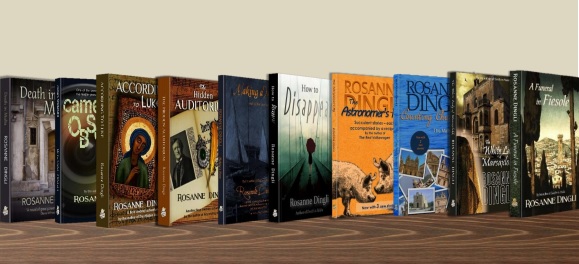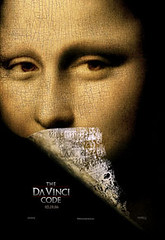 Image via WikipediaI have done something I have wanted to do for a long time: bring in the blog archive from my website into this blog, so that readers can find out what went on before. Here are the entries:
Image via WikipediaI have done something I have wanted to do for a long time: bring in the blog archive from my website into this blog, so that readers can find out what went on before. Here are the entries:
Thursday August 12, 2010
Now what?
"Like madness is the glory of life," wrote Shakespeare. He must have written it either when he despaired of finding empathy and someone to really talk to, or when he had turned a corner and suddenly found both, all wrapped up in the one person. Finding a kindred spirit is a rare thing for most of us. I am trying to find it for my next protagonist, who has fallen in a bit of a rut. I cannot make him read Shakespeare, because he is a jaded photojournalist, who reads National Geographics and camera manuals. I can't really make him meet some warm and understanding woman - not right now, at least - because that would mean the end of the book, really. I have hardly written past the establishment portion of the first third.
The poor man is stuck at this cafe in Rome, thinking desperate thoughts, and I can't find anything that might lift him out of his present inertia. Perhaps I need an incident: something noisy. Noisy enough to rise above the background hubbub that is so much a part of Rome.
Perhaps I should present him with a scene of blood and gore, crowds and shouting, mess and disaster. Just when he's left his camera in the car, which is tightly trapped between three others, about a kilometre away, in the double-parked insanity that does not allow this man ever to stop where he wants to be.
The plot, with its various ins and outs, is more or less there in my head. And scribbled on the back of an Avon order form, an old Woolworths receipt and a school permission slip somewhere. But I must get him off that cafe chair, away from his second doppio ristretto, before he can do anything else.
So I have started another novel! Yes - this is my third try. You fall in a kind of rut when one novel goes off to production, and starting another is never an easy thing. You miss your old characters, who you knew so well, and the locations that went so seamlessly with what you wanted to happen. Inventing new stuff and making up developments is far from fun.
Tomorrow might feel better
.
****
Saturday August 8, 2010
Submitting a manuscript can be a nerve-racking experience. It's a process that could take months. Once emails are sent, comments received, and doubt expressed, one could not blame a writer for feeling uncertain about anything written, let alone a novel of about 300 pages.
It could mean a return to the drawing board, something I have experienced more than once. I did write a second novel, but it went exactly nowhere. It does not even merit mention here.
My third? I worked so hard on the manuscript that I started to look at myself in a different light. I was turning into a different kind of writer: one that sought advice. I even sent the thing out to a band of readers, wondering how much of their comments I would stomach and how much of their advice I would take.
Surprisingly, I could agree with a lot that was said - and scribbled in the margins - of the bulldog clipped pages. I re-wrote. I re-read.
Sending the fresh manuscript off to my publishers was a matter of clicking the mouse... and waiting the legendary four weeks.
The response was not bad but it did send me back to the word processor. It took another good look at the writing, which brought on another re-shuffle of events, more consideration of how sentences were phrased, and the surprising addition of a whole new character, who was woven through the story with not a little trepidation and a lot of hard work. It was worth it. My editors at BeWrite Books liked what they saw, and offered a contract. Brilliant. Nothing quite matches that first feeling - not even landing a big whiting that flaps energetically on the jetty. According to Luke will be released soon - watch this space for more.
Sigh of relief? A huge one. But the work does not stop - promotion and publicity is next, and hatching the next novel. Already, the plot has been loosely sketched out at a very crumby and crowded breakfast table, and the characters are embryos in my head. Getting to know them will be a challenge, as it always is. They are slippery and elusive until that first dirty draft is wrapped up.
Intimacy with the characters will evolve as I edit and re-write... sometimes this takes 25 revisions. According to Luke went through more than that many, over a period of about 26 months.
Stay with me: read According to Luke and record your impressions on my blog or wherever you can leave a review. The minute it's released and available online, a notice will appear on my front page.
Big smile!
*****

Fresh content
Thursday November 5, 2009
Today I added a reviews page. I remembered exactly where I kept them, and zoomed right in to the correct spot. Don't think my study is that neat and organised: quite the opposite. There's got to be a room in the house (or three) where chaos is allowed a long and dusty reign.
Crowning this chaos are a borrowed guitar and a retrenched trombone. Poor instruments - perhaps they need a niche in a story somewhere. I think there is a story about a cello in the second book you will find on the Reviews page. The Bookbinder's Brother has been out of print since publishers Jacobyte Books called it a day. Together with Counting Churches and The Astronomer's Pig, it will be resurrected very soon.
Why not right now? (Isn't that typical... someone always shouts why not right now from the back of the room. They're usually under twenty.) Right now is not the time - I am giving all three books a once-over, which is not quickly done. They will see the light of day in 2010, and all those who have asked for them will be able to read them
.
*****

Image courtesy www.aad.gov.au
SUNDAY November 1, 2009
Food in Fiction
Our choices make us who we are: we don't all like the same things. What we like to read, listen to or do on the weekend... these are all facets of our make-up. An author thinks subconsciously about all these things when creating characters.
I like to think my characters are individuals in their own right, and they live and breathe inside my head. They take on aspects that develop gradually, just as the plot of the book develops gradually, no matter how swiftly I put down the elements in my working synopsis.
What my characters eat and drink might not have a fundamental effect on the plot, but it does make them plausible and alive to the reader. A vegetarian character, or one who drinks too much, or a personality that gives a lot of importance to what goes on her plate: these aspects lend reality to a novel.
Although it is fiction, we all need to feel that a book is alive: that what happens in it could happen. That its characters behave like real people. It's the only way a reader can relate and identify with a made-up cast of personalities.
The story might not hinge on fish and chips wrapped in paper, or a rack of lamb with new potatoes and beans, or a custard pie liberally sprinkled with cinnamon, but when written about as being chosen, eaten and commented about by a character, the dishes take on a worldly aspect of sensation that is so vital to modern fiction.
In her novel A Noble Radiance, by Donna Leon, the protagonist sits down with his father-in-law to a complicated meal at a Venetian restaurant. Each dish, and how the person enjoyed it, is described with relish and expertise. It is a scene that means more than fish or wine: it sends the reader messages and details that work better than a plain description of mood or attitude. It makes the book come alive.
****

TUESDAY October 27, 2009
Plot development
Today I added a character to my new draft. It was a matter of necessity: a subplot is an important thing, and the addition of a plot twist needed someone else in the story.
So I returned to the top and wove him in all the way through, to as far as I have got. It was much easier than I thought. Let's face it: it's a lot easier to add a character than to decide to eliminate one. Still, it did feel as if I was staring down some sort of precipice: Dingli Cliffs, indeed.
I now have to nut out his personality a bit more fully: I do this better in my head than in writing. Whether to make him nasty or nice is a big consideration, but seeing I am not even a third of the way into the story, perhaps I should let him develop like the others. It is true that not all players turn out the way you imagine them at the beginning. The plot sometimes necessitates a baddie or two that you did not originally create. Or a helping hand who cannot just materialise out of nothing in Chapter 23! Still, they do kind of flesh themselves out as I go.
My present work in progress is about a series of paintings that need to be looked at in one after the other. I still have doubts about the sanity of this, because - apart from the fact I have to take my protagonist on a wild chase through Italy - the research is already bewildering: I have found some altogether intriguing stuff I never knew existed.
Shall I weave it into my story?
*****

Pic courtesy Beth Buehlman
MONDAY October 26, 2009
MUSIC IN FICTION
I like to make my characters hear things. Perhaps fiction should have sound effects too: sound effects in words, written by the author not simply as padding or background, but as an indication of what the character listening to the sound effect is like. How we react to certain noises and sounds is built into our personality. Our experiences are certainly not limited to the merely visual.
Music is, like other aspects of art, something we are very subjective about. We have no idea, we say, why we like the music we do. But if we think hard, our favourite pieces are linked to certain experiences, certain milestones, and to our childhood. I want to make this point in fiction, by giving my characters music choices, likes and dislikes, that will turn them into people in my readers' eyes.
It is possible to flesh out a character in a book by making them startle easily to loud noises, or make them happy when they hear a sea breeze riffling through the trees. Giving them certain favourite music to listen to might make a reader relate or even identify with them.
What would you think of a character in a book who loved Beethoven, or Wagner? There could be one who liked Led Zepplin or Eric Clapton. Would it change your idea of a character if you read they hated Mozart and absolutely adored Frank Sinatra?
Finding a character in a book with musical favourites similar to yours would make the book special in your eyes. Perhaps my next novel will have that effect on someone.
*****

SUNDAY October 25, 2009
ART IN FICTION
These hands were drawn by an artist who becomes significant in the novel I am now writing. This work in progress is another art history mystery: I seem to enjoy writing the kind of book that needs a lot of research into history of art. It’s harking back to my education, I suppose. Also, it’s one of the things I like best, and it’s always more comfortable writing about the things with which you have some sort of truck. It’s up to you to discover which artist I am talking about. Or you can wait the necessary couple of years until the published novel shows its cover. It’s a frustratingly long wait, but processes are processes, and there are no short cuts. Just as in the writing, in the production of anything there are certain stages one cannot afford to miss.
Today I am listening to the music of Malcolm Williamson. His piece called Azure is very difficult to find: there is only one known recording in the whole world. But I got my hands on it thanks to the amazing friendliness of the presenter and researcher at ABC fm Classic. They sent me in the right direction, and the CD arrived in record time (no pun intended).
****
SATURDAY October 24, 2009
YELLOW CROCKERY
It's been a long day: a working synopsis for my work in progress is all nutted out. Family suggestions are extremely helpful, since plotting is not my forte first thing in the morning. Getting the requisite two subplots and sorting out the archetypes of my characters seems easy when the breakfast table is gradually filling with crumbs and empty cups.
The yellow teapot is a great success, the character in its dents and obvious venerability adds a certain something to our breakfasts and high teas. It is capacious, giving us a good four mugs of tea. And it goes with everything else, which is vital in this household. How did we ever do without an enamel teapot? The one on top of the kitchen cupboard does not count of course, even though its dark blue colour will go well with the rest of my crockery. It is above all a display item, although it has character and many signs of being loved. But do not be surprised if I mention we have used it, or if it surfaces in one of my books. My yellow china teapot (or one very much like it) has found its way into my finished novel, whose title, of course, I cannot yet divulge to you.
As I write, the complete manuscript is on its way in a cardboard box that fits it perfectly, across the miles, up high, on a plane. Where is it going? Never mind - eventually it will appear in print and will arrive safe and sound into your hands. I'm sure you cannot wait. In the meantime, Death in Malta will keep you entertained. There are many places you can get it on the web. The eBook is available at a very low price at BeWrite Books.
Between now and Christmas, I have to complete a rough first draft of my new book. It usually takes me about two months to set down a new draft, and I already have about 9 000 words that are more or less usable. My first draft is usually quite long, with about 20 000 words ending up on the cutting room floor. When I go back and edit, rewrite and redraft, I end up adding another seven or eight thousand.
Watch this space for more.

 Image via WikipediaVenice makes an excellent location for a writer to put inside a work of fiction. It's not difficult to see why this is. To make Venice one of the places where action takes place when writing a novel solves a number of dilemmas that writers often face.
Image via WikipediaVenice makes an excellent location for a writer to put inside a work of fiction. It's not difficult to see why this is. To make Venice one of the places where action takes place when writing a novel solves a number of dilemmas that writers often face.





















